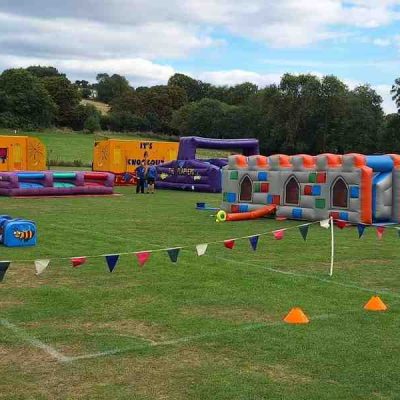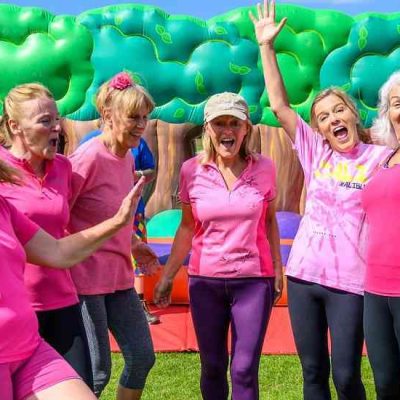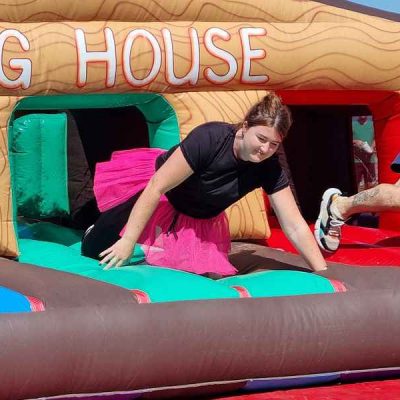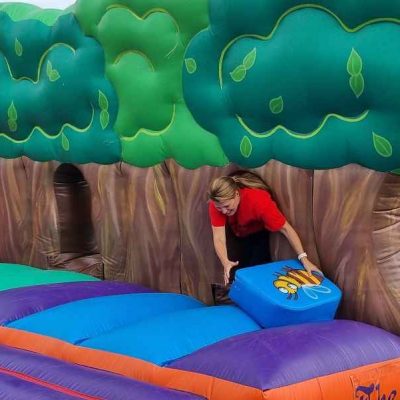The UK government released its ‘COVID-19 RESPONSE − SPRING 2021’ in February, which included a ‘Roadmap’ laying out the easing of restrictions. Below, we have cut and pasted the relevant parts that our clients will find the most reliance to with the roadmap for events .

COVID-19 RESPONSE − SPRING 2021
Listed below with the page number or reference to the paragraph within the government response document.
82. Outdoor activity has been prioritised because the likelihood of COVID-19 transmission is substantially lower in the open air than indoors.
STEP 1
Page 31. (graphical image) No earlier than 29th March. Outdoor sport & leisure facilities. Organised outdoor sport (children & adults)
102. The Government will also allow outdoor sports facilities to reopen, broadening the options for outdoor exercise and recreation. These facilities, such as tennis and basketball courts, and swimming pools, can be used by people in line with the wider social contact limits. Formally organised outdoor sports – for adults and under 18s – can also restart and will not be subject to the gatherings limits, but should be compliant with guidance issued by national governing bodies.
103. All children will be able to access any outdoor childcare and supervised activities. Parent and child groups can also take place outdoors with a limit of 15 attendees (children under five years of age do not count towards the attendee limit.)
Outdoor vs Indoor transmission
• Airborne transmission is a significant route by which COVID-19 passes between people. Particles of the virus can build up and circulate in the air in the form of aerosols in enclosed spaces (even if they are large) especially where air exchange is poor. 54 This makes indoor settings more risky than outdoors, where the fresh air quickly disperses the virus to safe levels. This is confirmed by observational studies tracing people infected with COVID-19 which shows the majority of transmission occurs in indoor settings and that ‘super spreader’ events (where many people are infected at one time) are more likely indoors than outdoors.55
• Though the airborne risk of COVID-19 transmission is much lower outdoors than inside, the risk of infection via larger droplets remains high if people engage in prolonged, face-to-face close contact with others. 56 Therefore, maintaining 2m distancing outdoors is still advisable. Outdoor surfaces may also still become contaminated with the virus, so it is also important to be mindful of what shared objects, e.g. playground surfaces and gate handles, are touched, and to maintain regular hand washing.
54: PHE Transmission Group: S0921 Factors contributing to risk of SARS-CoV2 transmission associated with various settings 18th December 2020
55: SAGE: Analysis of SARS-CoV-2 transmission clusters and superspreading events, 3rd June 2020
56: SAGE EMG: Application of physical distancing and fabric face coverings in mitigating the B117 variant SARS-CoV-2 virus in public, workplace and community, 14th January 2021
Socio-economic analysis of Step 1
• Opening outdoor sports settings will help to reduce the adverse physical and mental health effects experienced by large parts of the population, in particular children and those living alone. Exercise and outdoor sports are well documented to reduce individuals’ risk of major illnesses, such as heart disease, stroke, type 2 diabetes and cancer by up to 50% and lower risk of early death by up to 30%. 61 Physical activity is also known to help with improving mental health through better sleep, happier moods, and managing stress, anxiety or intrusive and ‘racing’ thoughts. 62
61: NHS: Benefits of exercise, June 2018 62 Mind: Physical activity and your mental health, March 2019
62: Mind: Physical activity and your mental health, March 2019
STEP 2
Page 37 (graphical image). No earlier than April 12th Outdoor attractions (zoos theme parks)
111. The majority of outdoor settings and attractions can also reopen, including outdoor hospitality, zoos, theme parks, drive-in cinemas and drive-in performances events. The rules on social contact outdoors will apply in these settings.
STEP 3
Page 40 (graphical image) No earlier than May 17th. Some Large events 4,000 or 50% limit.
120. (f) Some large events, including conferences, theatre and concert performances and sports events. Controlled indoor events of up to 1,000 people or 50% of a venue’s capacity, whichever is lower, will be permitted, as will outdoor events with a capacity of either 50% or 4,000 people, whichever is lower. The Government will also make a special provision for large, outdoor, seated venues where crowds can be safely distributed, allowing up to 10,000 people or 25% of total seated capacity, whichever is lower. In addition, pilots will run as part of the Events Research Programme to examine how such events can take place without the need for social distancing using other mitigations such as testing.
122. At Step 3, the Government will further ease limits on social contact, enabling the public to make informed personal decisions. It will remain important for people to consider the risks for themselves, taking into account whether they and those they meet have been vaccinated or are at greater risk.
STEP 4
Page 43 (graphic) No earlier than June 21st. No limit on social contact. Large events. No limit on all life events.
127. With appropriate mitigations in place, by Step 4, the Government aims to: a. Remove all legal limits on social contact, publishing accompanying guidance.
A Link to the Covid-19 Response – Spring document.

As of late July 2021, we are now on a version 6 of our Covid Risk Management Document (a password required to open the document)
Contact Us.
Please contact us if you have any questions or wish to talk about how our games can be ran to be covid secure.



